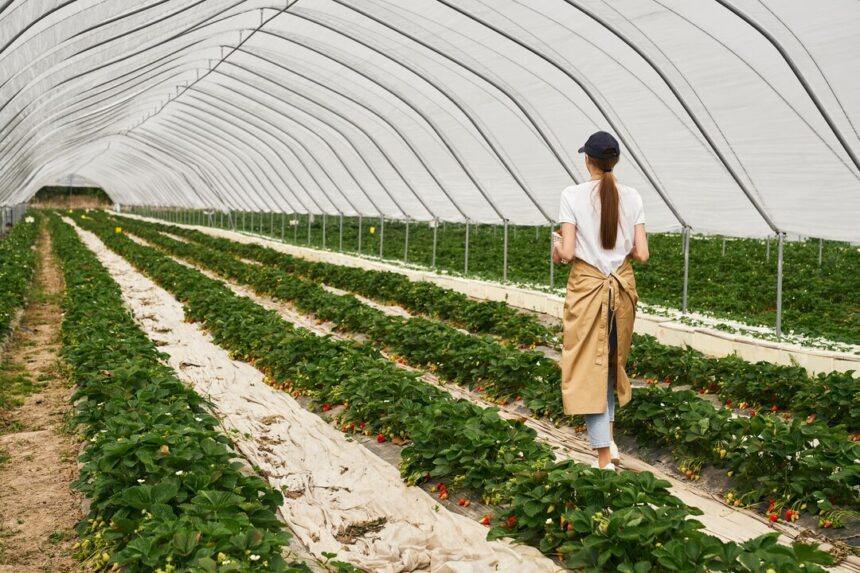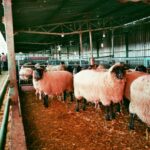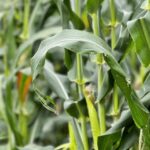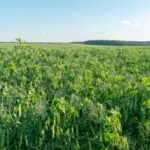Greenhouse farming is becoming an increasingly popular method for producing crops in a controlled environment. For South African farmers, it offers the ability to grow high-value crops year-round, improve yields, and protect plants from pests and extreme weather conditions. Whether you’re a small-scale grower or planning a commercial venture, understanding the equipment required to set up a greenhouse farm is critical to your success.
What is Greenhouse Farming?
Greenhouse farming involves growing plants in a structure covered by transparent material, such as glass or plastic, to create a controlled environment. It allows farmers to regulate temperature, humidity, light, and ventilation to optimize growing conditions.
This method is ideal for vegetables, fruits, flowers, and herbs, enabling farmers to meet market demands even in off-seasons.
Essential Equipment for Greenhouse Farming
Here’s a breakdown of the equipment you’ll need to get started:
1. Greenhouse Structure
The first step is selecting the right greenhouse structure based on your crops and budget. Common types include:
- Tunnel Greenhouses: Affordable and easy to set up, ideal for small-scale farming.
- Rooftop Greenhouses: Suitable for urban farming, maximizing unused spaces.
- Commercial Greenhouses: Larger and more robust, designed for high-volume production.
Make sure your structure is made of durable materials like galvanized steel and covered with UV-stabilized polyethylene or glass.
2. Ventilation System
Proper ventilation is crucial to maintain optimal air circulation, temperature, and humidity levels. Key components include:
- Exhaust Fans: Extract hot air and maintain airflow.
- Roof Vents: Release excess heat and allow fresh air to enter.
- Side Vents: Promote cross-ventilation for consistent airflow.
3. Irrigation System
Efficient irrigation ensures that your crops receive adequate water without wastage. Common systems include:
- Drip Irrigation: Delivers water directly to the root zone, reducing water loss.
- Sprinkler Systems: Ideal for larger areas, providing uniform coverage.
- Hydroponic Systems: Suitable for soilless farming in greenhouses.
4. Heating and Cooling Equipment
To maintain optimal temperatures, especially during extreme seasons, you’ll need:
- Heaters: Essential for colder months; options include gas, electric, or wood-fired heaters.
- Shade Nets: Protect crops from excessive heat during summer.
- Cooling Pads: Help lower temperatures in hot climates by evaporating water.
5. Lighting System
Supplemental lighting may be required during cloudy days or in areas with insufficient natural light. Options include:
- LED Grow Lights: Energy-efficient and customizable for specific crops.
- Fluorescent Lights: Suitable for smaller setups.
6. Planting Equipment
Basic planting tools are essential for soil preparation, planting, and crop maintenance. These include:
- Seed Trays: For germinating seeds in a controlled environment.
- Pruning Tools: For maintaining plant health and encouraging growth.
- Growing Mediums: Such as soil, coco coir, or perlite for planting.
7. Climate Control System
Advanced greenhouse farms use automated systems to monitor and control the environment. These systems manage temperature, humidity, and CO2 levels, ensuring consistent growing conditions.
8. Pest and Disease Management Tools
Greenhouses are not immune to pests and diseases, so preventive measures are necessary.
- Insect Screens: Keep pests out while allowing ventilation.
- Sprayers: For applying organic or chemical pest control solutions.
- Sticky Traps: Help monitor and manage insect populations.
9. Fertilization System
For optimal crop growth, a fertigation system can deliver nutrients directly to the plants via the irrigation system. This ensures even distribution of fertilizers and saves time.
10. Storage and Workspaces
Having a designated area for tools, seeds, and harvested crops is essential. Include workbenches and storage shelves to keep your greenhouse organized and efficient.
Tips for Starting a Greenhouse Farm
- Start Small: Begin with a smaller greenhouse to learn the ropes before expanding.
- Choose the Right Crops: Select crops suited to your local market and climate.
- Invest in Quality Equipment: High-quality tools and systems will save you money in the long run.
- Learn Continuously: Stay updated on greenhouse farming techniques and technologies.
Greenhouse farming is an excellent investment for South African farmers looking to increase productivity and meet market demands year-round. With the right equipment and careful planning, you can create an efficient, profitable greenhouse system.
Whether you’re growing tomatoes, herbs, or flowers, this farming method offers the control and consistency needed to succeed in the modern agricultural landscape.
Join 'Farmers Mag' WhatsApp Channel
Get the latest Farming news and tips delivered straight to your WhatsApp
CLICK HERE TO JOIN






